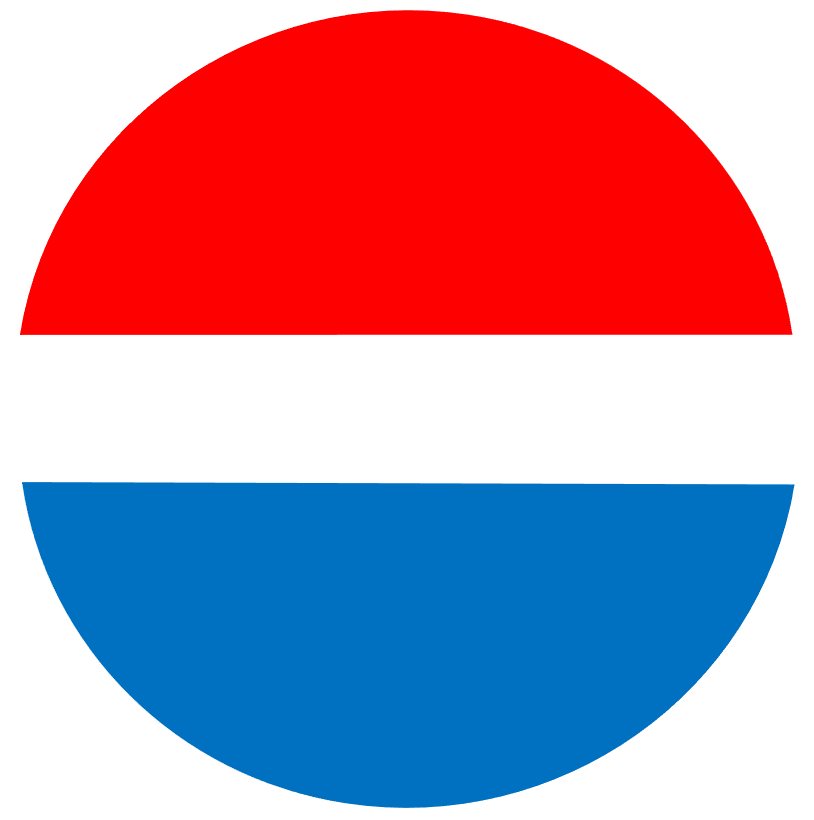Introduction
In this text ‘pension’ also includes annuity and social security benefits. However, government pensions are not included in this definition and will not discussed here. A ‘resident’ refers to a ’tax resident’. This text will only cover Swiss residents receiving a periodic Dutch pension. The text does not take other Dutch sources of income, such as owning Dutch real estate, into account.
The amended tax treaty in brief
Until 1 January 2021 the tax treaty between Switzerland and the Netherlands stipulated that Dutch pensions received by Swiss tax residents could in principle only be taxed in Switzerland. An exception to this was, for example, if the annual pension payment amounted to more than € 20,000 and a so-called ‘Pauschal’ was applicable in Switzerland. In that case, the Netherlands was allowed to levy taxes on the Dutch pension payments.
As of 1 January 2021 an amended tax treaty applies. One of the changes is the allocation of the right to levy taxes on pensions. Under the provisions of the amended treaty, Dutch pensions received by a Swiss resident may be taxed in the Netherlands. In the event of a periodic pension payment, the Netherlands may levy a maximum of 15% tax. In the event of a one-off pension payment, the Netherlands may tax this at its regular progressive tax rate (of up to 49.5%).
Pension benefits and Dutch personal income tax
The Dutch Income Tax Act of 2001 allocates a source of income (such as wages, pensions, an owner-occupied home, bank and savings accounts) to one of three so-called tax boxes. Each box has its own tax rate. Each source of income can only be declared in one box. An owner-occupied home, for example, is only taxable in box 1 (income from employment and home-ownership) and not also in box 3 (income from savings and investments). Pension income is taxed in box 1.
For persons born before 1 January 1946, box 1 has the following three income tax brackets for 2021:
| With a taxable income from work and home of more than | but no more than | the tax is the amount stated in column III, increased by the amount calculated by taking the percentage stated in column IV of the part of the taxable income from work and home that exceeds the amount stated in column I | |
| I | II | III | IV |
| – | € 35,941 | – | 9.45% |
| € 35,941 | € 68,507 | € 3,396 | 37.10% |
| € 68,507 | – | € 15,477 | 49.50% |
For persons born after 1 January 1946, box 1 has the following three income tax brackets for 2021:
| With a taxable income from work and home of more than | but no more than | the tax is the amount stated in column III, increased by the amount calculated by taking the percentage stated in column IV of the part of the taxable income from work and home that exceeds the amount stated in column I | |
| I | II | III | IV |
| – | € 35,129 | – | 9.45% |
| € 35,129 | € 68,507 | € 3,319 | 37.10% |
| € 68,507 | – | € 15,702 | 49.50% |
Example
John (a Dutch resident) was born in 1950. In 2021 he received € 50,000 in pension from a Dutch pension fund. The first € 35,129 is taxed at 9.45%, or € 3,319. The remainder, € 14,871 (= € 50,000 minus € 35,129), is taxed at 37.1%, or € 5,517. The total calculated income tax thus amounts to € 8,836.
Wage tax
Dutch pension providers withhold – among other things – wage tax from their payouts. The wage tax has the same rates and rate brackets as the income tax. In the income tax return, the withheld wage tax is deducted from the calculated income tax. In the example above, the pension fund would withhold € 8,836 in wage tax from the payment of € 50,000. The calculated income tax is also € 8,836. This means that there is no income tax due: it has already been ‘paid’ through the withheld wage tax.
Tax assessment
If the calculated income tax amounts to a payable amount of a maximum of € 48 (2021), no income tax assessment will be imposed by the Dutch tax authorities. This means that if the payable amount is more than € 48, an income tax return must be filed. This may be the case, for example, if there are several pension providers. Each provider only takes their payout into account when withholding wage tax, as the following example illustrates:
Example
In 2021 Julia (a Dutch resident born in 1950) receives an AOW (Dutch Old Age State Pension) of € 10,000 and an (annual) Dutch pension of € 30,000. The Sociale Verzekeringsbank (‘SVB’; in charge of paying out the AOW) and the pension provider each withhold 9.45% wage tax. However, as Julia’s total income is € 40,000, € 4,871 (= € 40,000 minus € 35,129) will not be taxed at 9.45%, but at 37.1%. This means the Julia will have to pay income tax and will therefore have to file a tax return.
Note 1: if the tax authorities request to file a tax return, then a tax return must be filed, even if the assessment limit of € 48 is not met.
Note 2: for non-Dutch residents: in addition to pension benefits, do they also, for example, own a Dutch holiday home? Then the tax calculation will most likely exceed the € 48-limit.
Dutch pension payments and the tax treaty with Switzerland
Swiss residents report their worldwide income in their Swiss personal income tax return. If a Swiss resident receives a Dutch pension payment, double taxation occurs. To prevent double taxation, under the amended tax treaty, Dutch one-off pension payments paid to a Swiss resident may be fully taxed in the Netherlands. Under the amended treaty, Dutch periodic pension payments paid to a Swiss resident may also be taxed in the Netherlands. The tax rate is capped at 15%. To prevent double taxation, the Swiss resident can claim a tax relief. More on that below under ‘The Swiss tax return and avoidance of double taxation’.
Withholding by Dutch pension providers
Until 2021, if a Swiss resident met the requirements of the (old) tax treaty – whereby the Dutch pension payment is only taxed in Switzerland – an exemption for the withholding of Dutch wage tax could be requested from the Dutch tax authorities. If the exemption was granted, the relevant pension providers did not have to withhold wage taxes on their pension payments to that Swiss resident.
Due to the amended tax treaty, the exemption no longer applies per 1 January 2021. At the end of 2020, the Swiss residents affected by the amended treaty were informed by the Dutch tax authorities. As a result, starting 1 January 2021, Dutch pension providers withhold wage tax on pension payments to Swiss residents. Partly because of the implementation of the amended treaty into their payroll system, but also because of possible liability issues, most Dutch pension providers generally do not take the maximum rate of 15% into account and tax the payment at the regular progressive Dutch rate (up to 49.5%). The exception to this is payments by the SVB. The SVB takes the new treaty into account, but that is because AOW benefits – due to their amount – always fall in the first tax bracket of 9.45%. This means that the SVB always automatically meets the maximum rate of 15%.
The Dutch tax return for a Swiss resident
The effect of the amended tax treaty could have major consequences for Swiss pensioners. To illustrate, the following four examples.
Example – income in the first tax bracket
Eva lives in Switzerland and in 2021 her only source of income from the Netherlands is an AOW of € 10,000. The SVB withholds 9.45% tax. The withheld wage tax equals the income tax due and because 9.45% is less than the maximum of 15%, no correction of calculated excess income tax will take place. As no income tax is due, Eva does not have to file a return in the Netherlands.
Example – income in the second tax bracket at 15% tax rate
Gerald (1945) lives in Switzerland and in 2021 receives an AOW of € 10,000 and an (annual) Dutch pension of € 34,970. The withheld wage tax amounts to € 945 and € 3,305 respectively. In total € 4,250 wage tax was withheld.
Gerald’s total income is € 44,970. The calculated income tax on this is € 6,745 (the first € 35,941 is taxed at 9.45%; the remainder, € 9,029 ( = € 44,970 minus € 35,941) is taxed at 37.1% with income tax; in total: € 6,745).
This means that Gerald’s total tax burden is 15% (€ 6,745 income tax / € 44,970 pension income). As the income tax burden is equal to the maximum rate allowed under the tax treaty, no correction needs to be made in the income tax return. The income tax due amounts to € 2,495 ( = € 6,745 calculated income tax minus € 4,250 withheld wage tax). € 2,495 is higher than the tax limit of € 48, meaning that Gerald has to submit a Dutch income tax return.
Example – income in the second tax bracket
Adam (1945) lives in Switzerland and in 2021 receives an AOW of € 10,000 and an (annual) Dutch pension of € 40,000. The withheld wage tax amounts to € 945 and € 4,901 respectively. In total, € 5,846 wage tax was withheld.
Adam’s total income is € 50,000. The calculated income tax on this is € 8,611 (the first € 35,941 is taxed at 9.45%; the remainder, € 14,059 ( = € 50,000 minus € 35,941) is taxed at 37.1%; in total: €8,611).
This means that Adam’s total tax burden is 17.22% (€ 8,611 income tax / € 50,000 pension income). The tax treaty stipulates that the tax rate may not exceed 15%; or € 7,500 ( = 15% x € 50,000). This results in a correction of € 1,111 ( = € 8,611 minus € 7,500) in the tax return.
The income tax due amounts to € 1,654 ( = € 8,611 calculated tax minus € 1,111 correction due to treaty application minus € 5,846 withheld wage tax). € 1,654 is higher than the tax limit of € 48, meaning that Adam has to submit a Dutch income tax return.
Example – income in the third tax bracket
Emma (1945) lives in Switzerland and receives an AOW of € 10,000 and an (annual) Dutch pension of € 80,000. The withheld wage tax amounts to € 945 and € 21,166 respectively. In total, € 22,111 in wage tax was withheld.
Emma’s total income is € 90,000. The calculated income tax on this is € 26,116 (the first € 35,941 is taxed at 9.45%, the next € 32,566 is taxed at 37.1%; the remainder, € 21,493 ( = €90,000 minus €68,507) is taxed at 49.5%; in total: € 26,116).
This means that Emma’s total tax burden is 29.02% (€ 26,116 income tax / € 90,000 pension income). The tax treaty stipulates that the rate may not exceed 15%; or € 13,500 ( = 15% x € 90,000). This results in a correction of € 12,616 ( = € 26,116 minus € 13,500) in the tax return.
The income tax due results in a receivable amount of € 8,611 ( = € 26,116 calculated tax minus € 12,616 correction due to treaty application minus € 22,111 withholding tax). It is wise for Emma to submit a Dutch income tax return.
The Swiss tax return and avoidance of double taxation
Dutch pension income paid to a Swiss resident is subject to income tax in the Netherlands as per 1 January 2021. The previous four examples show how this works out for the Dutch income tax return. As in previous years, the Swiss resident must declare this Dutch pension in his Swiss tax return. The amended treaty creates a double taxation. To prevent this, it has been agreed in the amended tax treaty that – upon this resident’s request – Switzerland will grant this resident a taxable income reduction of one third of the net amount of the received pension payments.
Conclusion
Application of the amended tax treaty to Dutch pension payments requires Swiss residents to be vigilant. In theory the amendment simplifies the allocation of taxation. However, it can be complicated to apply in practice. This is certainly the case if there are other taxable Dutch sources of income in addition to Dutch pension income (such as, for example, a Dutch holiday home).
Are you affected by the amended treaty and do you need support with your Dutch tax return? I regularly receive questions about the Swiss tax treaty and I have a lot of experience in its application. Please feel free to contact me.






